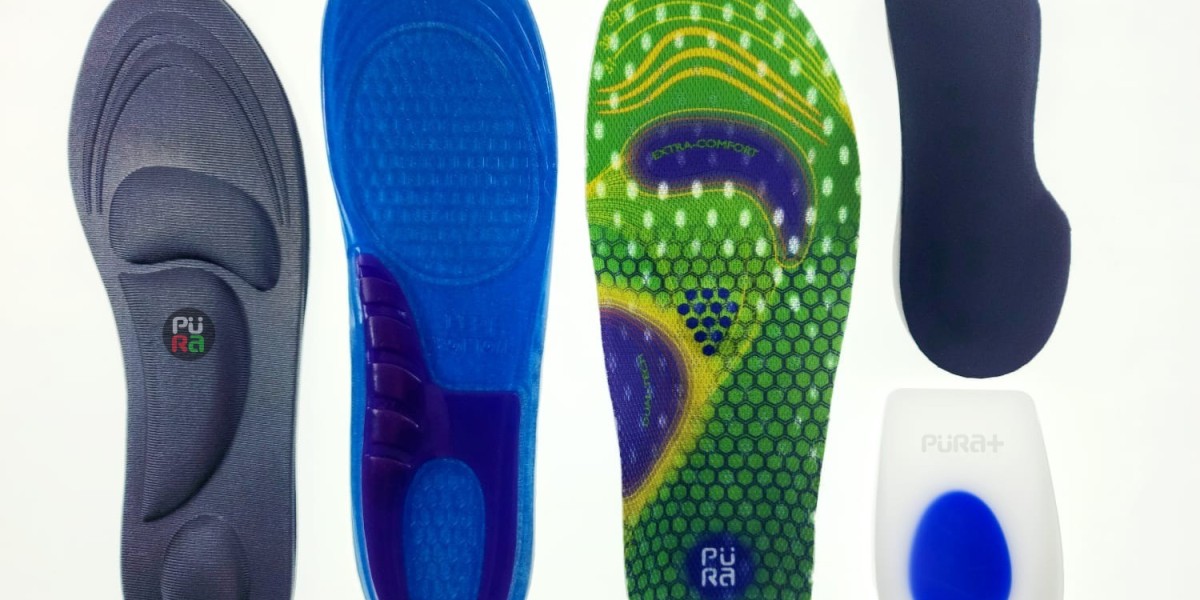When it comes to foot comfort and health custom shoe insoles can make a world of difference. These personalized orthotic devices are designed to address specific foot issues, provide better support, and enhance overall comfort. However, with a variety of options available, choosing the right custom insoles can be a daunting task. To help you navigate this process, we’ve compiled a comprehensive guide on what to consider when buying custom insoles for your needs.
Importance of Custom Insoles
Custom insoles, also known as orthotic insoles, are tailor-made inserts designed to fit the unique contours of your feet. Unlike over-the-counter insoles, custom insoles are crafted based on precise measurements and an analysis of your foot structure and gait. This personalized approach ensures optimal support, alignment, and comfort, which can help alleviate foot pain, improve posture, and enhance overall mobility.
Benefits of Custom Insoles
- Enhanced Comfort: Custom insoles provide a perfect fit, reducing pressure points and enhancing comfort during daily activities.
- Pain Relief: They can alleviate pain caused by conditions such as plantar fasciitis, flat feet, and arthritis.
- Improved Posture: By promoting proper alignment, custom insoles can help improve posture and reduce strain on the back and lower limbs.
- Injury Prevention: They offer better support and shock absorption, reducing the risk of injuries during physical activities.
Assessing Your Foot Needs
Before purchasing custom insoles, it’s crucial to assess your specific foot needs. This involves understanding your foot structure, identifying any existing issues, and considering the type of activities you engage in regularly.
Foot Structure and Shape
Feet come in various shapes and sizes, and understanding your foot structure is essential for selecting the right insoles. Key factors to consider include:
- Arch Type: Determine whether you have a high, neutral, or low arch. This can significantly influence the type of support you need.
- Foot Width: Insoles come in different widths, so knowing whether your feet are narrow, regular, or wide is important for a proper fit.
- Foot Length: Accurate measurement of your foot length ensures that the insoles fit comfortably within your shoes.
Existing Foot Issues
Custom insoles can address a variety of foot problems. Identifying these issues will guide you in selecting the most suitable insoles:
- Plantar Fasciitis: Characterized by heel pain, this condition often requires insoles with enhanced arch support and cushioning.
- Flat Feet: Individuals with flat feet benefit from insoles that provide additional arch support and stability.
- Overpronation or Supination: Custom insoles can correct these gait abnormalities by providing appropriate support and alignment.
- Arthritis: Insoles with extra cushioning can help alleviate pain associated with arthritis.
Activity Level and Type
Consider the activities you engage in most frequently. Different activities place varying demands on your feet, and choosing insoles designed for specific activities can enhance their effectiveness:
- Walking: For regular walking, look for insoles that offer cushioning and support for prolonged periods of use.
- Running: Runners benefit from insoles with superior shock absorption and arch support to reduce impact and prevent injuries.
- Sports: For sports like basketball, soccer, or tennis, insoles with enhanced stability and motion control are ideal.
- Work: If your job involves standing or walking for extended periods, insoles designed for comfort and support are essential.
Choosing the Right Material
The material of the insole plays a crucial role in its performance, comfort, and durability. Common materials used in custom insoles include:
Foam
Foam insoles offer excellent cushioning and shock absorption. They are lightweight and provide a comfortable fit. Different types of foam used in insoles include:
- EVA Foam: Ethylene-vinyl acetate (EVA) foam is soft, flexible, and offers good cushioning. It’s suitable for everyday use and light activities.
- Memory Foam: This foam molds to the shape of your foot, providing personalized comfort and support. It’s ideal for those seeking a custom fit.
Gel
Gel insoles provide superior shock absorption and cushioning. They are particularly beneficial for high-impact activities and individuals with joint pain. Gel insoles can help reduce pressure points and enhance comfort during prolonged use.
Cork
Cork insoles are known for their durability and natural support. They conform to the shape of your foot over time and provide excellent arch support. Cork insoles are a great choice for individuals with flat feet or those seeking eco-friendly options.
Leather
Leather insoles offer a combination of comfort and durability. They provide good moisture absorption and are suitable for individuals with sensitive skin. Leather insoles are often preferred for dress shoes and formal footwear.
Customization Process
The customization process for insoles involves several steps to ensure a perfect fit and optimal support. Understanding this process can help you make informed decisions when purchasing custom insoles.
Foot Analysis
The first step in creating custom insoles is a thorough foot analysis. This can be done through various methods, including:
- Gait Analysis: A gait analysis involves observing and measuring your walking or running pattern. This helps identify any abnormalities or imbalances in your gait that need correction.
- Pressure Mapping: Pressure mapping technology measures the distribution of pressure across your feet. This information is used to create insoles that provide optimal support and cushioning in the right areas.
- Foot Impressions: Traditional foot impressions or digital scans are taken to capture the exact shape and contours of your feet. This ensures a precise fit for the custom insoles.
Design and Fabrication
Once the foot analysis is complete, the design and fabrication process begins:
- Design: Based on the foot analysis, a custom insole design is created. This design includes the appropriate arch support, cushioning, and alignment features tailored to your specific needs.
- Fabrication: The custom insoles are then fabricated using advanced techniques and materials. This process may involve 3D printing, milling, or other methods to ensure accuracy and quality.
Fitting and Adjustment
After the insoles are fabricated, a fitting session is conducted to ensure they fit properly and provide the desired support. During this session, adjustments can be made to address any discomfort or issues. Regular follow-up appointments may be recommended to monitor the effectiveness of the insoles and make further adjustments if needed.
Budget Considerations
Insoles for shoes can vary significantly in price, and it’s essential to consider your budget when making a purchase. While custom insoles are generally more expensive than over-the-counter options, they offer superior support and long-term benefits.
Cost Factors
Several factors influence the cost of custom insoles:
- Materials: High-quality materials, such as gel or leather, can increase the price of custom insoles.
- Customization Level: The extent of customization and the complexity of the design can affect the cost. More detailed and precise insoles may be pricier.
- Brand and Provider: Established brands and reputable providers may charge more for their products and services.
Insurance Coverage
Check if your health insurance plan covers the cost of custom insoles. Some plans may provide partial or full coverage, especially if the insoles are prescribed by a healthcare professional for medical reasons.
Long-Term Investment
Consider custom insoles as a long-term investment in your foot health. While the initial cost may be higher, the benefits of improved comfort, reduced pain, and enhanced mobility can outweigh the expense over time.
Choosing a Reputable Provider
Selecting a reputable provider is crucial for obtaining high-quality custom insoles. Here are some tips to help you choose the right provider:
Professional Credentials
Ensure that the provider has the necessary credentials and expertise to design and fabricate custom insoles. Look for certifications or qualifications from recognized organizations in the field of orthotics and prosthetics.
Customer Reviews
Read customer reviews and testimonials to gauge the experiences of others who have used the provider’s services. Positive reviews and high ratings are indicators of reliable and satisfactory service.
Consultation and Support
A good provider will offer a thorough consultation and provide ongoing support. They should take the time to understand your needs, conduct a detailed foot analysis, and offer follow-up appointments for adjustments and evaluations.
Warranty and Return Policy
Check if the provider offers a warranty or return policy for their custom insoles. This ensures that you can seek adjustments or replacements if the insoles do not meet your expectations or requirements.
Custom insoles are a valuable investment for anyone seeking to improve their foot comfort, alleviate pain, and enhance overall mobility. By considering your foot structure, existing issues, activity level, and budget, you can select the perfect custom insoles for your needs. Remember to choose a reputable provider and undergo a thorough customization process to ensure the best possible fit and support. With the right custom insoles, you can step confidently and comfortably, enjoying the benefits of personalized foot care.








